Day 1
Swelling and pressure in the face and nasal area, with pain mitigated by medication.
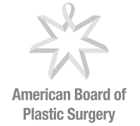

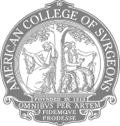
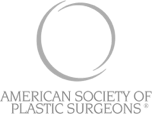
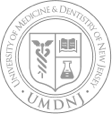
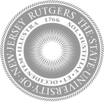
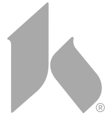
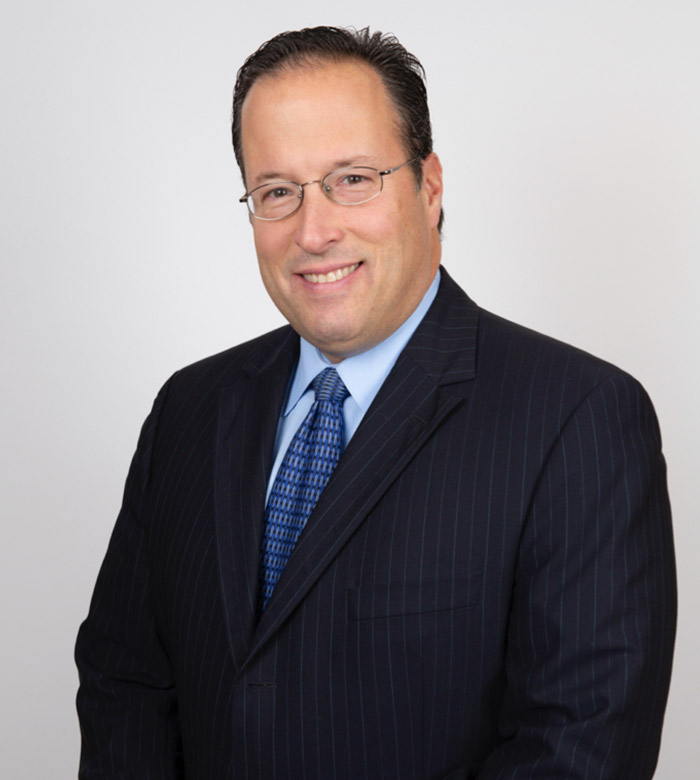
Dr. Andrew J. Miller is a facial plastic surgeon who specializes in cosmetic nasal surgery and has performed thousands upon thousands of rhinoplasty procedures. The Consumer’s Research Council rated him one of the best surgeons in America, and he is considered one of the top 50 cosmetic surgeons in NJ. He is a triple board member of prestigious facial plastic surgery groups with stringent qualifications criteria. In addition to operating out of accredited ambulatory surgical centers, Dr. Miller maintains hospital privileges in multiple local hospitals. When he isn’t personally performing delicate rhinoplasties and other facial plastic surgeries, he enjoys authoring peer-reviewed articles, studies, and book chapters on plastic surgery or lecturing at national conferences.
I only perform surgery on the face, and have been performing rhinoplasty every week for over 20 years.
The nose plays a central role in both the appearance and beauty of the face. Rhinoplasties are outpatient cosmetic surgeries that improve the size, shape, functionality, and contour of the nose and are the most frequently performed plastic surgeries in the United States.2 Cosmetic rhinoplasty procedures can reduce the size of the nose, straighten a crooked nasal septum, or eliminate a dorsal hump. Functional rhinoplasty procedures can correct nasal obstruction, deviated septum, or a birth defect, as well as a range of other nasal issues.
Dr. Miller and Dr. Heller have spent more than two decades performing rhinoplasty and refining their techniques to give patients exceptional results. Their results are naturally beautiful and integrated with the rest of one’s facial proportions, bringing balance and harmony to the facial features.
Rhinoplasty is the most difficult cosmetic surgery to perform, hands down.3 For peace of mind and perfect results, you need a cosmetic surgeon with decades of experience. Our surgeons are nationally recognized rhinoplasty specialists who perform rhinoplasty surgery every week. This experience allows Dr. Miller & Dr. Heller to concentrate on the fine details of rhinoplasty and the intricacies of each patient’s unique anatomy to achieve optimal outcomes and total patient satisfaction.
At Associates in Plastic Surgery, our highest priorities are your total comfort, safety, and satisfaction. Performing rhinoplasties every week for 20-plus years, a set of unwritten rules tends to develop as guiding principles:
Our rhinoplasty surgeons only operate on the face. If we’re not doing a rhinoplasty, we might be doing a facelift or an eyelid surgery, but we’re always operating in the realm of the face. That laser-like focus builds unmatched familiarity with facial features and anatomy.
Our rhinoplasty surgeons achieve very natural-looking outcomes. No one wants to look like they’ve had work done, particularly on the face. Our surgeons hone in on the most important features that set apart a problem nose from a perfect nose, leaving you when a visible improvement yet perfectly naturally so.
If you spend enough time researching rhinoplasty and reviewing the work of some surgeons, you’ll come to notice that a certain, set style is used from patient to patient. And that’s not a good thing since every face, and every nose is unique. In contrast to that, our surgeons carefully customize the procedure for every single patient. You can be assured that the optimal result for your particular features can be achieved.
You won’t see a set "style" in our photos, as each case is individualized based on what the patient wants and what we as surgeons can accomplish. The fact that we have performed over 2,500 rhinoplasties ensures that the surgical dissection is smooth and nontraumatic. This helps to create a quicker recovery.
Curating a tailored plan for you means understanding the details and intricacies of your facial anatomy. Poor planning can cause significant problems even if the wrong procedure is done perfectly. “A nose is a nose is a nose” is the approach that results in so many unnecessary revision rhinoplasties. We don’t do that. Our rhinoplasty surgeons will analyze your nose and, with your input, create an ideal plan for reshaping the nasal bones to achieve a beautiful and natural-looking outcome. This plan is enhanced with computer imaging to help you maintain realistic expectations.
Expect to be listened to and to discuss what you like and dislike about the size, shape, and structure of your nose. It’s helpful to come prepared with a written list of notes, questions, or concerns, as well as any photographs or magazines you might have seen with a nose like the one you’re after.
Computer imaging will be used to help give you an idea of how your nose might look after surgery. This is entirely non-invasive, and no pain or discomfort is involved. It simply helps you and our surgeons to get a complete picture of what can be accomplished and to be able to agree upon it or consider a number of alternatives.
You’ve done your research, and you’re interested enough to have come in for a consultation. This is your opportunity to really get answered all of your questions, to bring up your concerns and fears, and get them well settled.
Expect to get even more information about the procedure and the post-surgical process.4 This will help distill all you may have read and watched online into the most important points.
While in our office, you’ll be under no pressure to move forward with a rhinoplasty, and if you’re truly not a good candidate, or if we feel strongly that there are other avenues worth pursuing before surgery, we will be the first to tell you.
“Am I a good candidate for this procedure?”
“How long will the operation take?”
“What is the recovery time?”
“Is postoperative medicine necessary?”
“What is the cost of the procedure?”
The American Academy of Facial Plastic and Reconstructive Surgery and the American Society of Plastic Surgeons advise patients to write questions down before a consultation and to write down the surgeon’s answers. This will help you collect your thoughts and refer to or review the answers carefully later.
“You should be prepared to be candid with the surgeon about your medical history, medications, allergies, habits, and background—which could affect the outcome of the surgery. The surgeon will also explain to you his or her experience and expertise in the area of facial plastic surgery you are considering. Some consultations may include computer imaging to show you what the surgery might accomplish. The surgeon can also describe what anesthesia is used for each of the surgeries you may be contemplating. The surgeon might also advise on supportive surgery to enhance the outcome. It is crucial for you to ask enough questions to find out about all aspects of the proposed surgery.”
Rhinoplasty is a great choice for patients who have reached physical maturity and are in good general health, and who are yet unsatisfied with the size, shape or contour of their nose, enough so that they’re interested in undergoing a surgical procedure to correct it.5 The ideal patient does not smoke cigarettes, or can cease doing so for some time leading up to and after the procedure. In cases where a minor or underage patient is interested in a rhinoplasty, our surgeons make assessments on a per-case basis. As bullying and physical and mental harassment can come to people who look different than their peers, oftentimes the benefits of doing a rhinoplasty on a young adult can outweigh the possible risks.
Open rhinoplasty is performed under general anesthesia, and during this procedure, a small incision is made at the base of the nostrils in order to lift the nasal skin. Closed rhinoplasty can be performed under general or local anesthesia, and during this procedure, no external incision is made, and all surgical work is done through the nostrils. Aside from this, both styles of rhinoplasty are virtually identical. Which is better? That depends on what’s to be done in surgery. If mostly bone work is to be done, we’ll take a closed approach. The open technique allows for better vision of and access to the nasal cartilage and allows precision adjustments to be made. The incision, done with meticulous care, disappears in time. Our rhinoplasty surgeons, Dr. Miller & Dr. Heller, do both open and closed rhinoplasty and will determine which method is best for you.
Rhinoplasty is one of the most common cosmetic surgery procedures requested for men as well as women. These are the “same procedure,” performed quite differently.
Observing, understanding, and acting on these differences is crucial, as feminizing a male or masculinizing a female nose looks entirely unnatural. Our rhinoplasty surgeons have the expertise and experience necessary to carefully craft these differences.
Just as rhinoplasty for men and women requires different approaches, so, too, do nose jobs for different ethnic groups. An Asian or African-American rhinoplasty patient will often have a flat nasal bridge which can be built up to create a more balanced nose, taking the emphasis off the tip. The tip or the nostrils are often wide in the ethnic patient and can be sculpted or thinned to improve the shape while keeping the patient’s general ethnic appearance intact.
Patients with nasal breathing difficulties or chronic sinus conditions that aren’t responding to other medical treatments will see considerable benefit from a septoplasty. A rhinoplasty can be done at the same time as sinus surgery is done to improve the outer appearance of the nose. Dr. Miller specializes in this surgery and performs it regularly. This joint procedure allows you to look better and breathe easier. Insurance may also cover some or all of the costs of surgery.
While surgery is the best means of creating long-lasting change in the nose and often the only way to dramatically alter the size and shape of the nose, occasionally, a patient isn’t quite ready for an all-out surgery or may not have settled on their ideal look. In such cases, Radiesse can be used to make noticeable improvements in the size, shape, and contour of the nose. A bump can appear to be corrected by careful use of Radiesse above and below the bump to give it a smoother profile. Some asymmetries can also be corrected this way. Radiesse is a simple in-office procedure that takes about 5 minutes, and its results typically last 9-12 months.
If you’ve had a rhinoplasty already and are no longer satisfied with its outcome, our rhinoplasty specialists can revise that procedure. Rhinoplasty is the single most intricate cosmetic surgery, and its revisions are no less elaborate. Scar tissue forms after a rhinoplasty, and it can cause the cartilage, skin, and even bone to shift. The goal of a revision is to reverse those problems and create a natural, aesthetically pleasing outcome. Revision rhinoplasty often requires a longer recovery period, but, done correctly, with strong cartilage support constructed, the results are well worth the wait.
On its own, rhinoplasty can significantly improve the look of the face. However, because the nose is only one part of the facial anatomy, albeit a central one, the chin can also be augmented with a simple implant for better facial integration and a more attractive profile.
“A chin implant can be placed at the same time as rhinoplasty to improve the side view of the face,” says Dr. Miller. “A person with a large nose may also have a small chin, which produces a rounded appearance to the face. Reducing the nose and enlarging the chin can change that profile to a nice, straight one.”
Allow yourself two weeks off of work to recover following your rhinoplasty surgery. Depending on how fast and smooth your recovery is, you likely won’t be out of commission the entire time, but it is in your best interest to secure this recovery time in advance to allow yourself enough time in the event that it is needed. Throughout recovery, we’ll be in touch frequently, and you’ll have a direct line to the office should anything unusual or unexpected occur. This is very rare, but please know that you’ll have direct contact with us whenever needed.
Swelling and pressure in the face and nasal area, with pain mitigated by medication.
Swelling and bruising increase and then start resolving (dissipating). Rest, a good diet, the lightest of cardio exercises (walking), and intermittent application of cold compresses will greatly aid recovery.
Swelling continues to decrease. Pressure in the nasal area is significantly reduced, and medication is masking pain. By five days out, you may find pain medication is longer needed.
One week post-op, we’ll see all patients in the office to remove any cast that was used and remove stitches.
Most of the swelling and bruising are gone.
We’ll see patients again at the 14-day mark to ensure everything is going well.
Physical activity may resume, but no contact in the nasal area for a total of 4 weeks.
Most recovery is fully complete, and noticeable swelling has disappeared entirely. (The area is still swollen and is still healing, but you and your surgeon are likely the only ones who notice it.)
We’ll see patients in the office again at eight weeks out to ensure good healing.
Finally, we’ll see patients after six months to a year post-op to check their progress.
Additionally, we will see any patient anytime they have concerns or questions about their result and are always available for them.
Dr. Miller: “Most every patient is very excited to see their new nose. While some swelling is present at first, a nice change can already be seen, which will only get better over time. Most patients also say that there was minimal to no pain. Nasal congestion was the primary symptom experienced.”
Dr. Miller: “It starts around $6500 for very minor procedures to over $10,000 for a complex revision rhinoplasty.”
Dr. Miller: “There aren't really any safety concerns as risks are very minimal. Postoperative bleeding that requires packing occurs in less than 1% of patients. This risk is so low because of the technique we use, keeping major blood vessels in the nose intact. Primarily, it is most important that the patient is in good health and can undergo anesthesia. Most cosmetic concerns include a bump along the bridge of the nose or a wide and/or droopy tip. We can file down the bump and refine the cartilage to lift up and thin the nasal tip.”
Dr. Miller: “I enjoy performing rhinoplasty more than any other cosmetic procedure because they are all different. Since no two noses are the same, I have to adjust my techniques for each case, so the best possible outcome is attained. That keeps the process interesting as well as challenging.”
Primary rhinoplasty means this is a patient’s first nose job. Naturally, this is the best time to get the procedure correct, as subsequent procedures are even more difficult. Dr. Miller and Dr. Heller usually achieve a very refined, beautiful, and natural-looking nose that rarely needs improvement or subsequent surgeries.
Contact our New Jersey office today to schedule a consultation with our rhinoplasty specialists. We will help answer any and all concerns about undergoing nose surgery and see if you are a good candidate. We are also offering virtual consultations for the safety, comfort, and convenience of all our patients at this time.